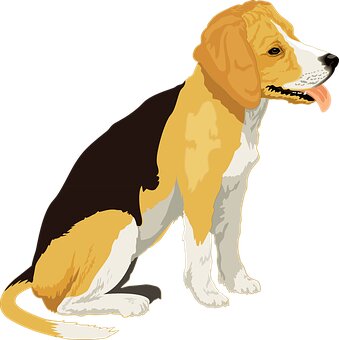
Memoirs Of a Yellow Dog by O. Henry is an account written from the perspective of a dog, explaining his life to the reader. The story deals with themes of feeling trapped, freedom, and a lack of meaningful connection. The story follows the life of a yellow dog and is written in a casual manner, as though the reader and the dog are already friends.
In the first two paragraphs, the author speaks directly to the reader, recognizing that writing from the perspective of an animal was not original in any way. He points out that this is not meant to be some type of high-class story and is a simple memoir by a very normal dog.
Memoirs Of a Yellow Dog | Summary
The dog comes from humble beginnings, not much is known of his past. His first memory is of being sold to a plump lady who called him affectionate names in a very high-pitched voice. As he grew, his appearance changed for the worse, but the lady didn’t love him any less and was still convinced he was a good-looking dog.
They lived in a normal New York apartment with the plump lady’s husband. The dog pitied her husband to no end. The husband was under the plump lady’s thumb and did everything she told him to. One of the tasks was to walk the dog every night.
The dog spends his days watching the plump lady waste time. He lies in the corner and has dreams of chasing cats and growling at old women, living life as an actual dog. His pity for the husband kept increasing. The dog felt that he and the husband looked so alike that even the people in the streets were able to see it.
One day, as they were walking, the dog looked up at the man and tried to tell him that he should be glad that he isn’t a dog because it means that he is safe from the affections of the plump lady. The man, however, could not understand the dog.
The dog soon spoke to the neighboring terrier, after noting that the terrier’s master looked quite happy after walking the dog every evening. The terrier said that his master gets drunk every night, and so walks back home as though he didn’t have a care in the world.
This made the yellow dog come up with a plan. The next evening that the man took him out for a walk, the dog directed him to a pub. The dog, who was named Lovey (much to his chagrin), was trying to make the husband drink in order to finally be able to escape. At the end of the night, the man set the dog free. Yet, Lovey did not leave, as he wanted the husband to leave with him. The husband caught his drift, and they both decided not to return to the flat. The cherry on top was the fact that the dog would never be called Lovey again. He was renamed “Pete”.
Memoirs Of a Yellow Dog | Analysis
This short story was published in 1906 and deals with themes of feeling trapped, freedom, and a lack of meaningful connections. The memoir of a yellow dog is written in such a way that the reader feels as though the dog is already an acquaintance of theirs. Additionally, the dog is clearly speaking to the reader and even directly addresses the reader in the memoir.
The narrator tends to be humorous, and sarcastic. He has no pretensions of being high class, as mentioned by the author. We see the whole story played out through the eyes of the yellow dog. The story first follows how the dog feels trapped and sees the emptiness in the life of the plump lady. We then hit upon a plan of escape, and finally freedom.
The yellow dog was bought by the plump lady and immediately became the object of all her affections. She had her own little cute names for him and would kiss him all over his face while baby-talking to him. He lived with her in her flat and saw himself becoming uglier. But she saw him only through rose-colored glasses and still believed in his beauty. He felt trapped in his life with her, and this is easily seen in him mentioning his pipe dreams of being a real dog. He does not feel like he is living an actual life, just languishing in the corner of a flat in New York.
This trapped feeling extends to the husband too. The dog mentioning that they both looked alike is representative of the fact that they both also feel similar emotions. The man obeys every word said to him by his wife. He washes the dishes, he listens to her talk for ages, he walks the dog. He lives a life of sadness, and this is implied by Lovey’s questioning of the neighboring terrier. Lovey was surprised that the terrier’s master always looked so happy, which makes it clear that he is used to seeing his master unhappy.
From this, the dog moves on and begins hatching a plan of escape. He learns that the terrier’s master loosens up with alcohol and decides to try to affect his own master in a similar manner. He convinces his master to go into a bar to drink and, by the end of the night, his master gets quite drunk. It is clear that the husband had no qualms about drinking either and gladly went into the saloon.
Here is where we see freedom begin. The removal of the dog’s collar is the satisfactory ending everyone expects, and one expects that the dog would run away. However, O Henry has been intertwining the emotions of both the dog and the husband throughout the story, so the freedom isn’t sweet unless both of them are free.
The collarless dog does not run away. He bounds around his master, and the husband soon realizes that he can allow himself the same freedom. This is the true satisfaction of the story. The plump lady’s husband leaves behind the life he detested, and steps into a new life with his dog. The beginning of this new life is reaffirmed in renaming the dog to “Pete”. They shake off their past and begin anew.
The lack of meaningful connection is very evident in the life of the plump lady, and consequently the lives of her dog and her husband. She wastes her time the entire day, and that is interspersed with an appearance of affection toward Lovey. This is purely an appearance because a meaningful love would involve the dog actually feeling loved, and free. The poor yellow dog only dreams of living the life of a real dog. In terms of her husband, there is no appearance of affection at all. He is subject to her beck and call, and his emotions are the same as those of the dog. The marriage is a failure, and only the lady has happiness in her life. However, by the end of the story, her happiness is exchanged for the freedom of her husband and dog.
Memoirs Of a Yellow Dog | About the Author
- Henry, or Oliver Henry, is the pseudonym of William Sidney Porter. He was born on September 11, 1862, in North Carolina.
- Henry’s style is characterized by surprise twists at the end and his amusing narration. In his time, this style was a hit with the readers but hated by his critics. However, now, he is one of the most well-known short story writers, and he even has an award named after him, awarded for outstanding short stories.
Some of his famous works are “Gift of the Magi” and “The Ransom of the Red Chief”.
He died on June 5, 1910, in NYC.


